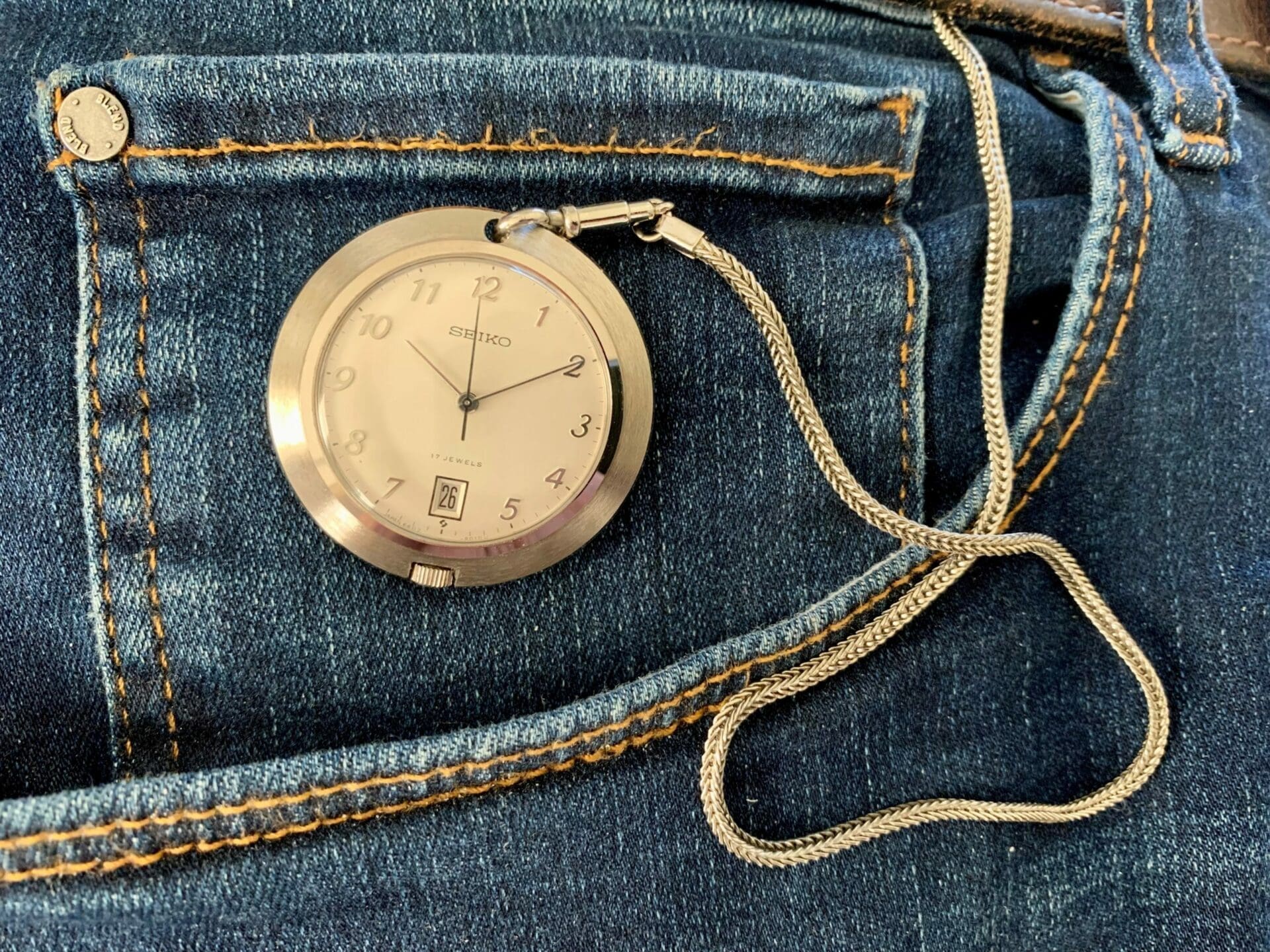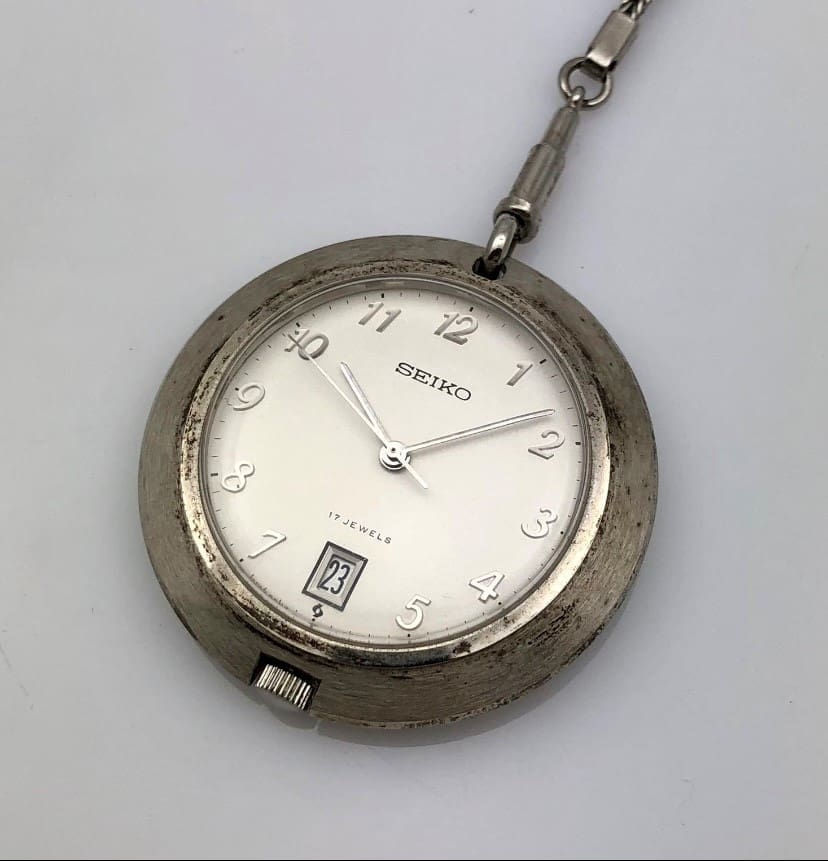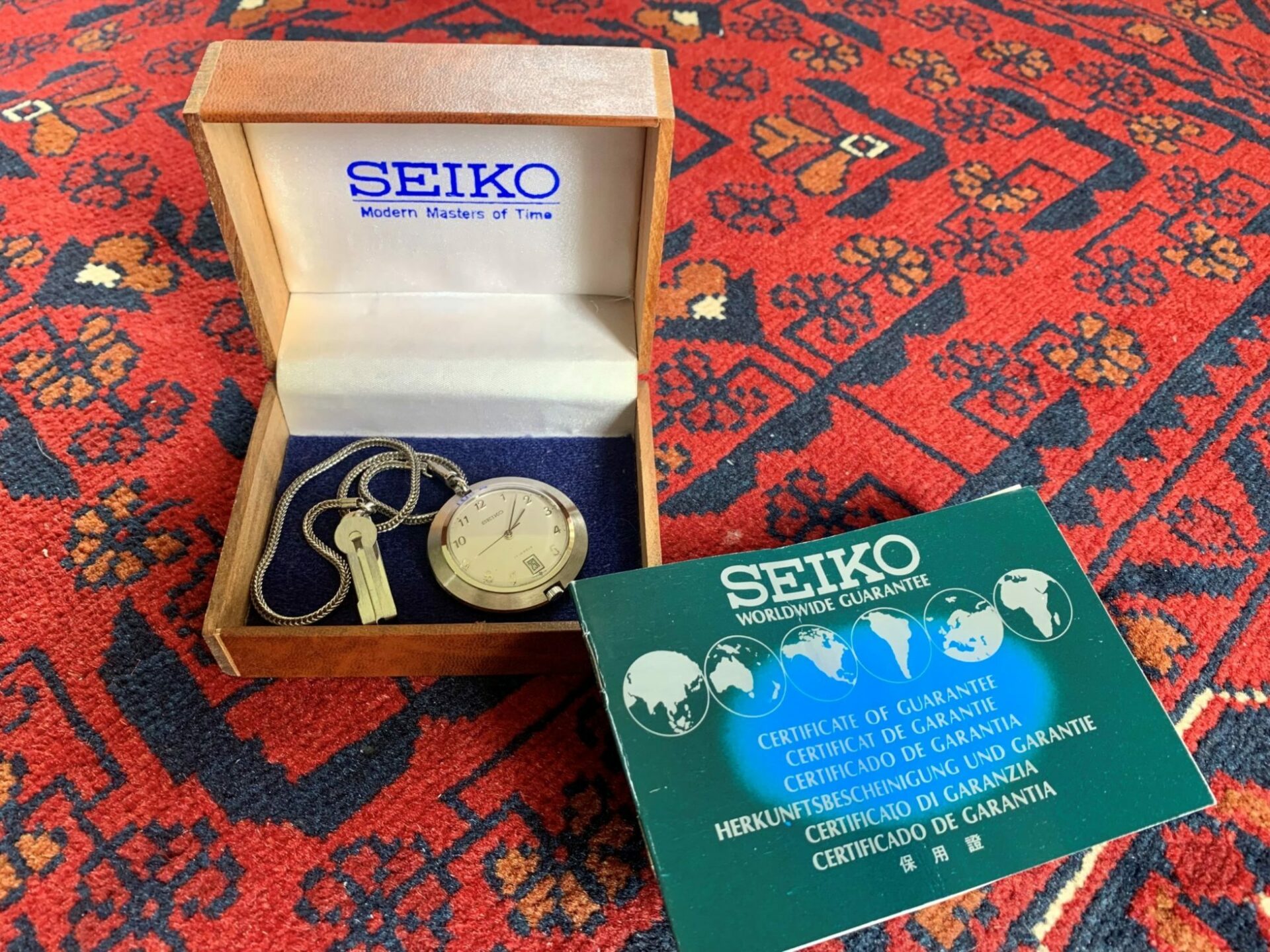Why I bought a vintage Seiko pocket watch
Jason MarsdenThis 1974 Seiko pocket watch ref 6602-9010, stands apart from all my other timepieces. Today the convenience of a hands-free wristwatch has seen pocket watches mostly relegated to collectors, Victorian enthusiasts, Steampunk fans or people who want engraved presentation items. Pocket watches are still available new today, from low-end pieces to mid-range Seiko (eg SWPQ002 and SVBR003), to the current five Patek Philippe catalogue options. Pocket watches have also been the platform for many hyper high-end showpieces such as the Vacheron Constantin 57260 with its staggering 57 complications.
The introduction of the pocket watch was the beginning of personal mechanical and portable timekeeping. As status symbols they became very elaborate and a good way for a distinguished gentleman to display his wealth and sophistication whilst out and about. Within industry and commerce, where a ship’s chronometer was vital for navigation, the railway-certified pocket watch was critical for the safe and timely running of trains. Oversize goliath pocket watches were fitted into custom weatherproof enclosures for mounting on the dash of early automobiles and aeroplanes.
Seikosha produced their first pocket watch in 1895 with a dial marked “Time Keeper”, although they had been making pocket watch cases since 1893.
The Seiko Type 19 pocket watch became an official Railway Watch of Japan in 1929. Today Seiko railway pocket watches have an avid and very knowledgeable collector base. These watches are easily identified by their typically Breguet-style numerals, spade and whip hands, and white face with a circular bow ring around the crown. This style has remained very consistent over nearly a century of production.
I purchased my Seiko dress pocket watch as a bit of a gamble. The online listing showed what appeared to be a very dirty or corroded case, but with clean dial, chain, box and papers. The rear still had the original oval factory sticker attached. Thus, the big question was: what was up with the case? My first clue was the PDP stamp on the case back. Seiko have a large library of case material designations and PDP indicates palladium plate. Palladium is harder than platinum and rarer than both gold and platinum. Palladium is tarnish-resistant but not so as much as platinum or rhodium. Seiko also plated some early ’80s wristwatches with palladium.
The watch arrived after a few days and first inspection confirmed that the discolouration was not wear-related but some sort of surface oxidation. After 45 years or so inside the box, perhaps some oxidisation of the palladium was to be expected. A very light rub with a polishing cloth containing a minute amount of Autosol metal polish soon had the brushed areas clear of oxidation and the polished areas looking like new. A few marks on the fob chain were similarly easily dealt with.
The watch hosts a 6602 manual-wind, non-quickset date, 17-jewel movement. This is a reliable movement and was used in wristwatches throughout the ’60s. Will I actually wear this watch? I don’t often wear a waistcoat, but given modern jeans often still have a pocket watch pocket (yes that’s what that little pocket above the main pocket was originally intended for) then I think I’ll definitely be trying it out in the near future.







